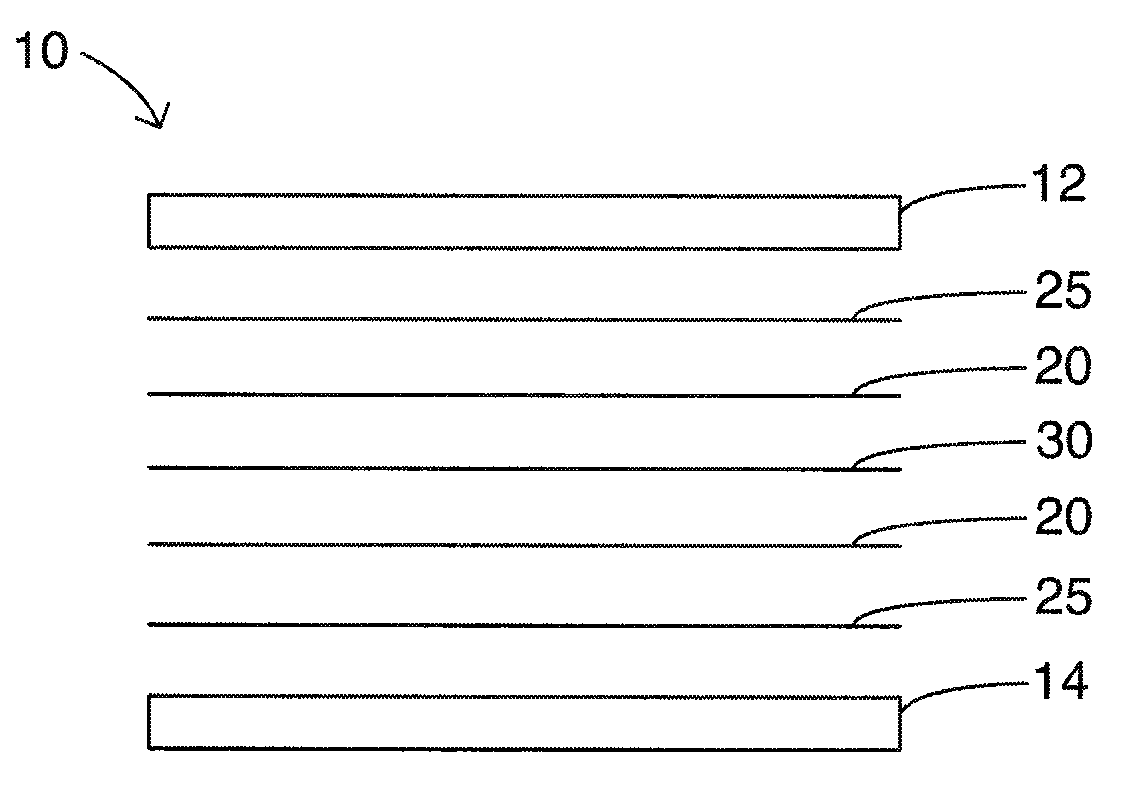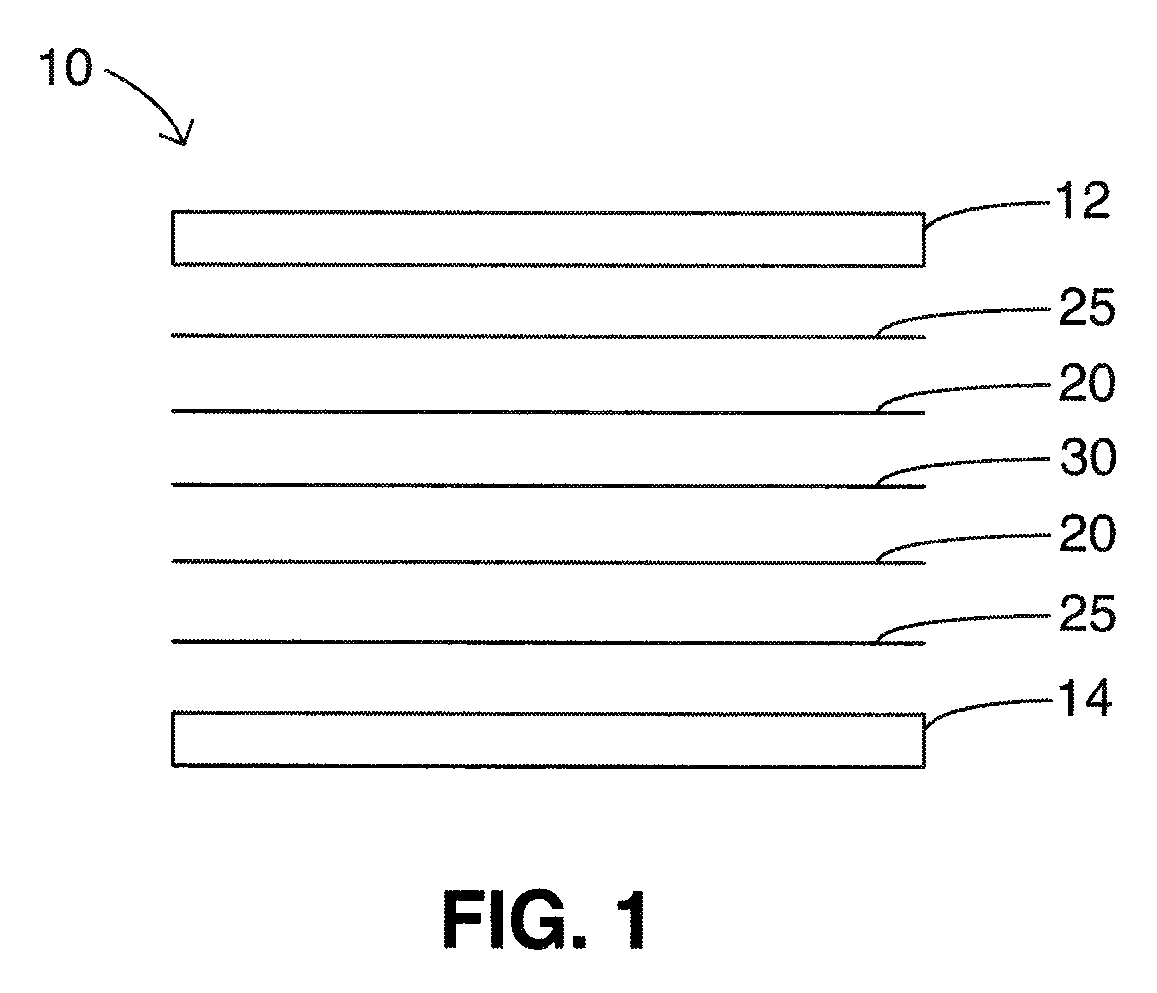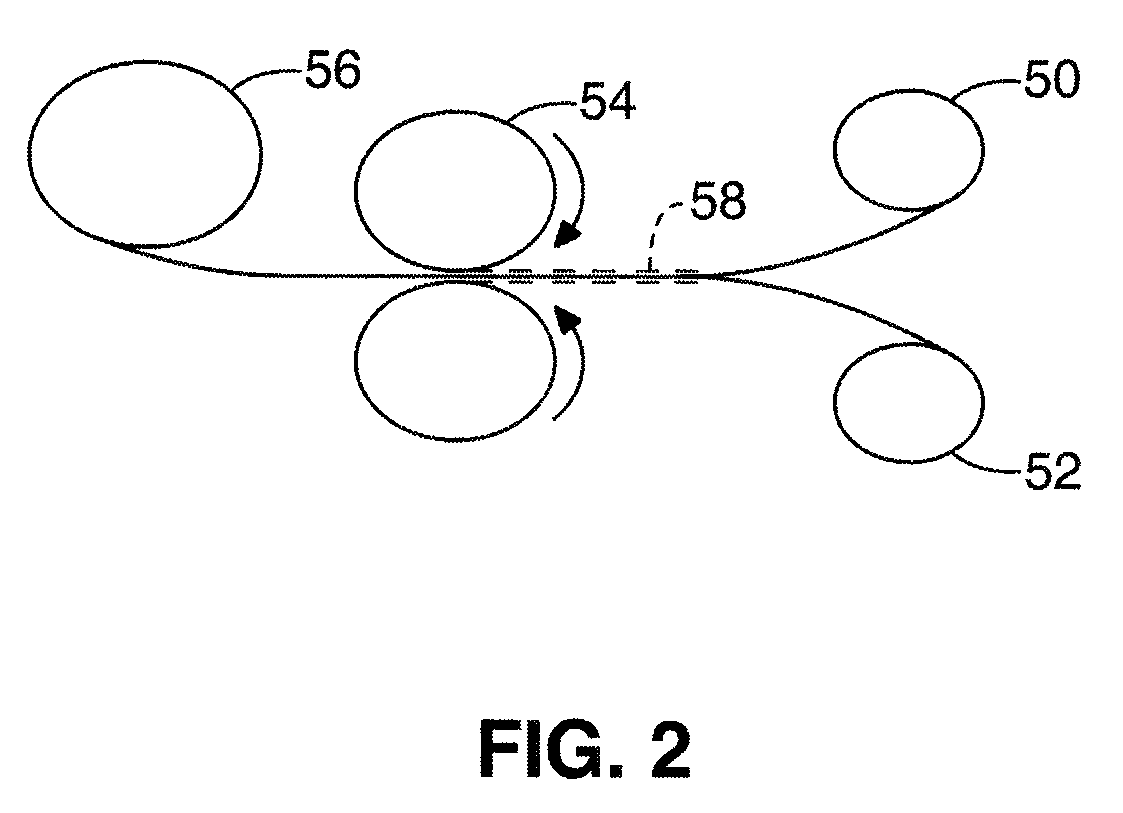Puncture and abrasion resistant, air and water impervious laminated fabric
a technology of laminated fabric and impermeable air and water, applied in the field of puncture and abrasion resistant laminates, can solve the problems of eva laminate becoming soft and tacky, not only susceptible to degradation, but also damage, and film subject to such degradation would prove highly unsuitable in warm or hot environments
- Summary
- Abstract
- Description
- Claims
- Application Information
AI Technical Summary
Benefits of technology
Problems solved by technology
Method used
Image
Examples
example 1
[0030]A laminated fabric was produced by pressing a 17×17, plain weave fabric, style 902, woven from 1200 denier weight Spectra® 900 yarn with an EVA film and outer low density polyethylene film. The two films had a total thickness of about 8 mils. The three layers were subjected to a hydraulic press for five minutes at a temperature of 230 degrees Fahrenheit at 50 pounds per square inch.
example 2
[0031]A laminated fabric was produced by pressing a 34×34, plain weave fabric, style 904 woven from 650 denier weight Spectra® 900 yarn with an EVA film and outer low density polyethylene film. The two films had a total thickness of about 8 mils. The press temperature was 280 degrees Fahrenheit and the pressure was 150 PSI. The time under pressure and heat was five minutes.
example 3
[0032]A laminated fabric was produced by rolling together a 17×17 plain weave fabric, style 900, with an EVA film, an outer low density polyethylene film, and a 0.5 mil polyester release paper. The two films had a total thickness of about 8 mils. The tightly wound roll was wrapped with heat resistant tape and heated in an oven at 265 degrees Fahrenheit for 18 hours.
PUM
| Property | Measurement | Unit |
|---|---|---|
| thickness | aaaaa | aaaaa |
| thickness | aaaaa | aaaaa |
| thickness | aaaaa | aaaaa |
Abstract
Description
Claims
Application Information
 Login to View More
Login to View More - R&D
- Intellectual Property
- Life Sciences
- Materials
- Tech Scout
- Unparalleled Data Quality
- Higher Quality Content
- 60% Fewer Hallucinations
Browse by: Latest US Patents, China's latest patents, Technical Efficacy Thesaurus, Application Domain, Technology Topic, Popular Technical Reports.
© 2025 PatSnap. All rights reserved.Legal|Privacy policy|Modern Slavery Act Transparency Statement|Sitemap|About US| Contact US: help@patsnap.com



